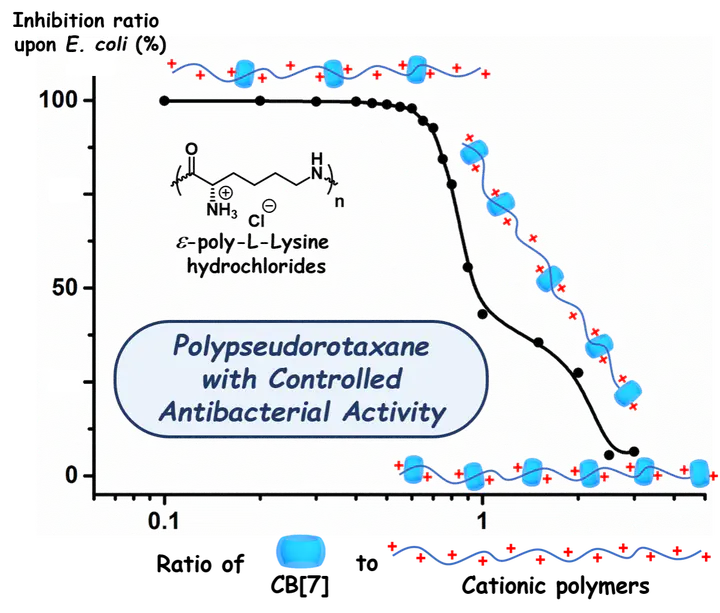Polypseudorotaxane constructed from cationic polymer with cucurbit[7]uril for controlled antibacterial activity
 Image credit: ACS
Image credit: ACS摘要
This letter is aimed to develop a general strategy to fabricate polypseudorotaxanes with controlled antibacterial activity based on cationic polymers. As a proof of concept, the commercially available antibacterial cationic polymer, ε-poly-l-lysine hydrochloride, was chosen for the demonstration. Using host–guest chemistry, cucurbit[7]uril (CB[7]), a water-soluble macrocyclic host, was employed to bind with the positive charge and hydrophobic component on ε-poly-l-lysine hydrochlorides for antibacterial regulation. In this way, by tuning the ratio of CB[7] to the cationic polymer, the antibacterial polypseudorotaxane can be obtained, and the antibacterial efficiency can be well tuned from 5% to 100%. This line of research will enrich the field of cationic polymers and polypseudorotaxanes with important functions on precise control over antibacterial activity.